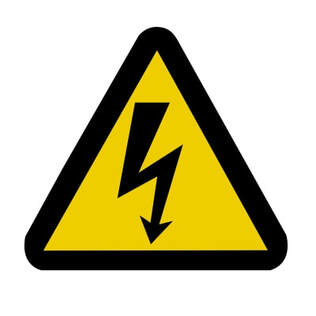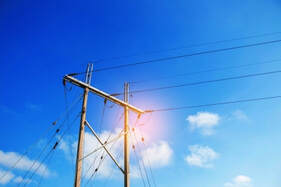One dead, two in hospital after crane hits power-lines  Image courtesy of zdiviv at FreeDigitalPhotos.net Image courtesy of zdiviv at FreeDigitalPhotos.net Damaging utility lines (gas, electrical, water and fibre optic cables) can be dangerous when it involves gas and electricity and it’s expensive to repair broken lines. In addition, it often disrupts the construction project while repairs are carried out, possibly resulting in delays. Damaging utility lines may also disrupt services to the client and the neighbours. What a fine way to start a construction project – upsetting the neighbours and the client at the project start because construction work cut their power or water. It’s imperative to locate all the existing utility lines and clearly mark them, then ensure that all workers are aware of their presence. Unfortunately on several of my construction projects, even though the location of utility lines were known, workers were careless and still managed to damage them. Workers must take care when working near these cables and pipes, even excavating by hand close to services. If there’s any concerns that the pipe or cable has been damaged they should immediately notify you. Sometimes a cable or pipe is only slightly damaged and the problem isn’t reported or detected. These damages only become apparent after work has happened over the lines, possibly concrete slabs have been poured over the area, even complete buildings have been finished. Damaged cables may eventually blow when the ground is wet, or water from a leaking pipe may finally become visible on the surface. Finding the problem at this stage is difficult and expensive, involving digging up the completed work to get to the problem.  Image courtesy of Good-start at FreeDigitalPhotos.net Image courtesy of Good-start at FreeDigitalPhotos.net Overhead electrical cables are dangerous, and care must be taken that equipment doesn’t come in contact with the cables. In a recent accident in Australia one person was killed and two injured when a crane came in contact with power cables. Even steel items coming within two metres of a live high voltage electrical cable can cause a flash over of electrical current, which will damage equipment and cause serious injury to operators or workers. Workers carrying long metal items (such as aluminium ladders or reinforcing steel) shouldn’t come in contact with overhead cables. Low overhead cables should have a marker line at least a metre below it to highlight and protect the cable. Where possible the authorities should lift or move overhead cables which obstruct or restrict construction work. Regrettably, even newly installed utility pipes and cables on the project are often damaged by workers who are digging or drilling in the vicinity and haven’t been informed of the cables and pipes. I’m sure most of us have had water pipes and power cables damaged on our construction projects. What’s been the worst result?  Do you want to learn more construction management tips and advice - read 'The Successful Construction Supervisor and Foreman'. This is what one reader said: "I have read this book and I found many practical lessons for those interested in construction Projects. I strongly recommend it to Project Managers, Construction Managers, Senior and young Engineers. They will avoid many mistakes that I have done unfortunately during my career on many construction sites. Good lecture and many thanks to the Author". © 2019 This article is not to be reproduced for commercial purposes without written permission from the author. construction management construction project management
1 Comment
4/6/2021 05:02:19 pm
I appreciated it when you shared that workers need to be careful when working near these cables and pipes, even excavating by hand close to services. Besides, it is great if the company hire a reliable service that can monitor the project until it is done. I would like to think if a company is working on a utility project, it should consider hiring a reliable service that can help manage it.
Reply
Leave a Reply. |
Archives
June 2024
Note: We welcome genuine comments, especially comments that add additional information to the subject matter in the article. We however reserve the right to remove inappropriate comments, which includes comments that have nothing to do with the subject, comments that include inappropriate language, and comments that are an advertisement for a product or company, or which include an advertising link. Comments must be in English. We will not enter into discussion on why a particular comment was removed.
CategoriesCopyright 2016 - The attached articles cannot be reproduced for commercial purposes without the consent of the author.
The opinions expressed in the attached articles are those of the writer. It should be noted that projects are varied and different laws and restrictions apply which depend on the location of the contractor and the project. It's important that the reader uses the supplied information taking cognisance of their particular circumstances. The writer assumes no responsibility or liability for any loss of any kind arising from the reader using the information or advice contained herein. "I have what I consider some of the best books on construction management."
Books are available from: Amazon.com Amazon.co.uk takealot.com kalahari.com Amazon.in Amazon.de Amazon.fr Amazon.it Amazon.com.au Powell's Fishpond uread bokus Amazon.ca Amazon.es Other retail stores Available in paperback or on Kindle "28 YEARS OF CONSTRUCTION PROJECT MANAGEMENT EXPERIENCE, DEVELOPING SUCCESSFUL CONSTRUCTION PROJECT MANAGERS AND BUILDING SUCCESSFUL CONSTRUCTION COMPANIES"
|



 RSS Feed
RSS Feed




